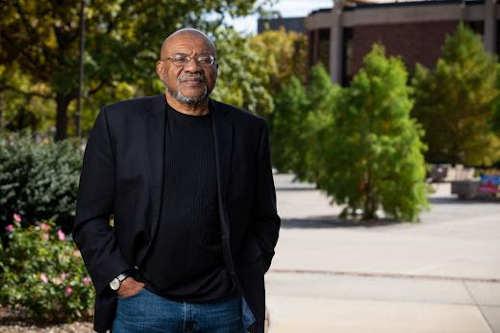‘MEMORY’ Rated R
There is no quit when it comes to Liam Neeson taking the leading role in action thrillers, and “Memory” proves to be no exception when calling for the seemingly ageless actor to display the requisite physical toughness.
However, the stereotype of Neeson the action figure that has gained traction since his role of revenge hero in the first “Taken” film is upended this time in the part of Alex Lewis, a professional hitman afflicted with incipient dementia.
Not straying too far from his screen persona of righteous avenger, Neeson’s character is a bad guy with scruples, which means he has no compunction about killing sex traffickers or sleazy businessmen but draws the line on the more vulnerable.
Our first glimpse at Alex’s trade and his diminished mental capacity is a gruesome hit in a Mexican hospital, followed by his predicament of remembering where he put his car keys for a quick getaway.
As an assassin working both sides of the Texas/Mexico border, Alex’s fading memory is cause for retirement but he’s persuaded to take one last job because, even though unstated, he’s still got “a particular set of skills.”
Unable to resist the insistence of his Mexico City contact offering a large wad of cash for another job, Alex is instructed to kill two people in El Paso, which happens to be his home turf.
The first job is to eliminate wealthy businessman Ellis van Camp (Scot Williams) and retrieve the flash drive stored in his safe. Pulling off this part of the assignment is easily accomplished.
Upon discovering that the second victim is 13-year-old Beatriz (Mia Sanchez), who had been pimped out by her father (Antonio Jaramillo) to the entitled son of a prominent developer, Alex won’t kill a child.
Meanwhile, undercover FBI agent Vincent Serra (Guy Pierce) is hell-bent on stopping the sexual abuse of children, along with his partner Linda Amistead (Taj Atwal) and Mexican cop Hugo Marquez (Harold Torres).
Davana Sealman (Monica Bellucci), the well-known real estate mogul, along with her depraved son Randy (Josh Taylor), runs a sordid criminal enterprise of drugs and underage sex trafficking.
Connected with corrupt officials, the villainous Sealman has wide berth in El Paso for her nefarious endeavors, such that local detective Danny Mora (Ray Stevenson) rebuffs FBI agent Serra’s dogged pursuit of justice.
For his part, Alex is not deterred from going after Sealman even if she’s protected by lawmen and a feckless district attorney thwarts the determination of the FBI agents to bring down Sealman’s sex ring.
There may be a turf war between the El Paso authorities and the feds, but Alex goes about the business of dispatching the thugs not so easily apprehended by Serra’s crew even when his memory starts to falter.
An interesting twist is that Serra is so focused on cracking Sealman’s sex ring that he ends up in the tight spot of aligning with Alex in the takedown of sleazebags.
Arguably, “Memory” is the type of action thriller that might have been more suitable for a streaming service or straight-to-video, notwithstanding it’s better than Neeson’s recent “Blacklight.”
Nevertheless, “Memory” is a serviceable B-movie that delivers the action goods craved by Liam Neeson fans, even if it offers temporary enjoyment before eventually dropping into a memory hole.
FOREIGN FILMS ON DVD
Proving that action films don’t have to be homegrown, “Indemnity,” set for release on May 10th, is South Africa’s most ambitious thrill ride packed with stylishly choreographed fights, car crashes, explosions and daring fire rescues.
Traumatized Cape Town ex-fireman Theo Abrams (Jarrid Geduld) wakes up next to his wife’s corpse, with no recollection of what transpired and all evidence pointing to him as the killer.
Labeled the prime suspect, Theo quickly finds himself hunted by sinister forces and a ruthless deputy chief of police and embarks on a breakneck mission to uncover the truth behind his wife’s death.
As the former firefighter struggles to survive, connections are revealed between his past, the mysterious death of his spouse, and a government conspiracy with terrifying implications.
A newcomer to the genre, lead actor Jarrid Geduld spent three months with stunt masters and performed all his own stunts, including a record-breaking hanging suspension stunt performed outside a 21st floor window.
In 1969, the Norwegian government announced their discovery of one of the world’s largest oil fields in the neighboring North Sea, which launched a prosperous period of offshore drilling.
The disaster in “The Burning Sea” comes fifty years later, when a crack opens on the ocean floor causing a rig to collapse and it becomes clear there would be environmental consequences for these actions.
When a team of researchers, including submarine operator Sofia (Kristine Kujath Thorp), rushes in to search for the missing and assess the damage, they discover this is just the start of a possible apocalyptic catastrophe.
As rigs are evacuated, Sofia’s loving companion Stian (Henrik Bjelland) becomes trapped in the depths of the sea, and she must attempt one last life-saving measure by diving in for a rescue.
Tim Riley writes film and television reviews for Lake County News.

 How to resolve AdBlock issue?
How to resolve AdBlock issue? 





